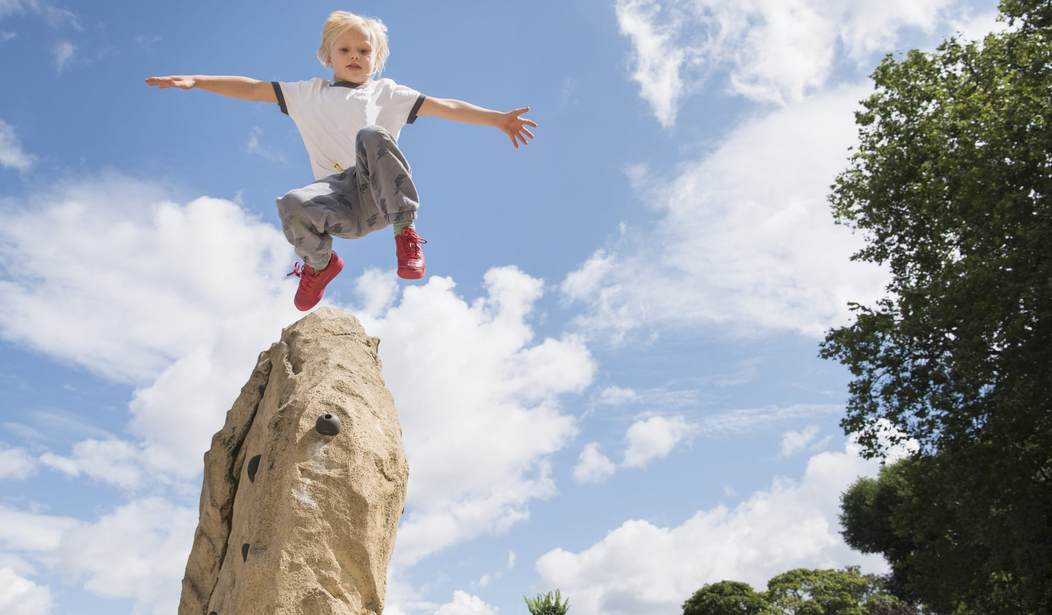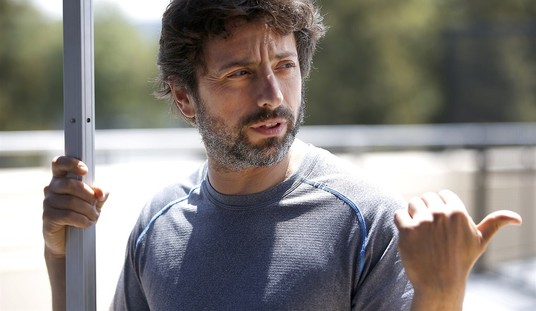Would you let your child play in a playground stocked with wood scraps and bricks? Or on a jungle gym constructed out of gnarled boughs tied together with willow wands? A growing number of children in Britain are doing just that with the Queen’s blessing.
Okay, perhaps Liz isn’t thrilled about it, but the majority of parliamentarians are quite happy to see more risk re-introduced into British playgrounds. A growing number of parents are as well. Most parks in Britain, including those on school grounds, now include everything from swings and jungle gyms to supplies best found at Home Depot. Signage indicates that these “risks” have been “intentionally provided, so that your child can develop an appreciation of risk in a controlled play environment rather than taking similar risks in an uncontrolled and unregulated wider world.”
2018 Play Conference presenter @_studio_ludo Meghan Pecaut Talarowski had her play research featured in a cover story of the Sunday edition of The New York Times, "In Britain’s Playgrounds, ‘Bringing in Risk’ to Build Resilience." https://t.co/EO3fTmnBIt pic.twitter.com/a9mj6bLGkR
— US Play Coalition (@USPlayCoalition) March 12, 2018
Both anti-“nanny state” conservatives and progressives favoring a “freer and more natural childhood” are behind the measure. Nostalgia also plays a role, thanks to a generation of grandparents having grown up playing in post-war rubble. Research also indicates that when given the choice, children prefer to explore more risk-taking in playground scenarios.
So, why isn’t this happening in America? Higher litigation costs. The New York Times points out:
Underlying the difference in play is a difference in law. The United States uses the jury system for personal injury cases, and liability costs, as a percentage of gross domestic product, are more than double those of most eurozone economies.
In other words, when an American child is injured on the playground, medical costs are incurred. Costs that would presumably be automatically covered in a single-payer federally managed healthcare system like Britain’s. The Times reasons that Britain can afford to take more risk because the government is there to pay for the injurious fall.
Sound like shady reasoning for taking on more risks in play? Scroll down to the end of the Times’ coverage and you’ll read the story of one kindergartener who “fashioned a catapult, stacking seven bricks on one end of a wooden plank and jumping solidly onto the other end, sending the bricks flying into the air, over the heads of his playmates.” The Times didn’t detail what happened to his playmates when gravity worked its magic. The Old Gray Lady simply ended the story there with the reflections of one mother who observed, “If you don’t give those children those creative skills, that risk, that take a chance. If they don’t have all that risk out there when the child is four, the adult isn’t going to do that.”
And if one four-year-old decides to take a risk like, say, catapulting bricks into the air, will his playmates even reach adulthood ready to take chances?
Proponents of Britain’s risk-taking playgrounds note that they are often supervised by adults and that playground deaths are rare, occurring on average only once every 3 to 4 years. Injury statistics, like permanent brain damage from flying bricks, however, are not discussed. And while parental involvement is barely mentioned, photographs accompanying the story appear to discourage it.
The question is, should we view Britain’s new free play measures in terms of risk or critical thinking skills? It’s an interesting idea to encourage children to take risks, presuming they’d actually learn something from it. But without proper supervision, they chance to learn nothing at all and suffer a lifetime of serious, even deadly consequences.
When I was nine, I had a teacher who was missing several fingers. He could tell we were all curious, so one day he asked us if we knew how he lost them. “Were you in Vietnam?” one kid asked.
“Yes, I was, but that’s not how I lost my fingers,” the teacher explained. “When I was about your age I decided to see what would happen if I hit batteries with a hammer. Friends had done it and told me the explosions were great. So, I did it. The explosions were great. So great, in fact, that I blew off my fingers. Pretty stupid, huh?”
He then proceeded to lead us on several supervised nature walks, teaching us what berries we could and couldn’t eat before letting us run free for a pick and play.
That is the difference between imparting the notion of risk-taking and teaching the kinds of critical thinking skills essential for survival. It’s a nuance missing from the conversation on risk in British playgrounds. A simple reliance on socialized medicine isn’t enough to save a child’s limbs, let alone his life. In the end, the ultimate responsibility still rests with supervising adults. Perhaps that is why children prefer to take greater risks on the playground: because they trust that the adults there are watching and have their best interests at heart.








Join the conversation as a VIP Member